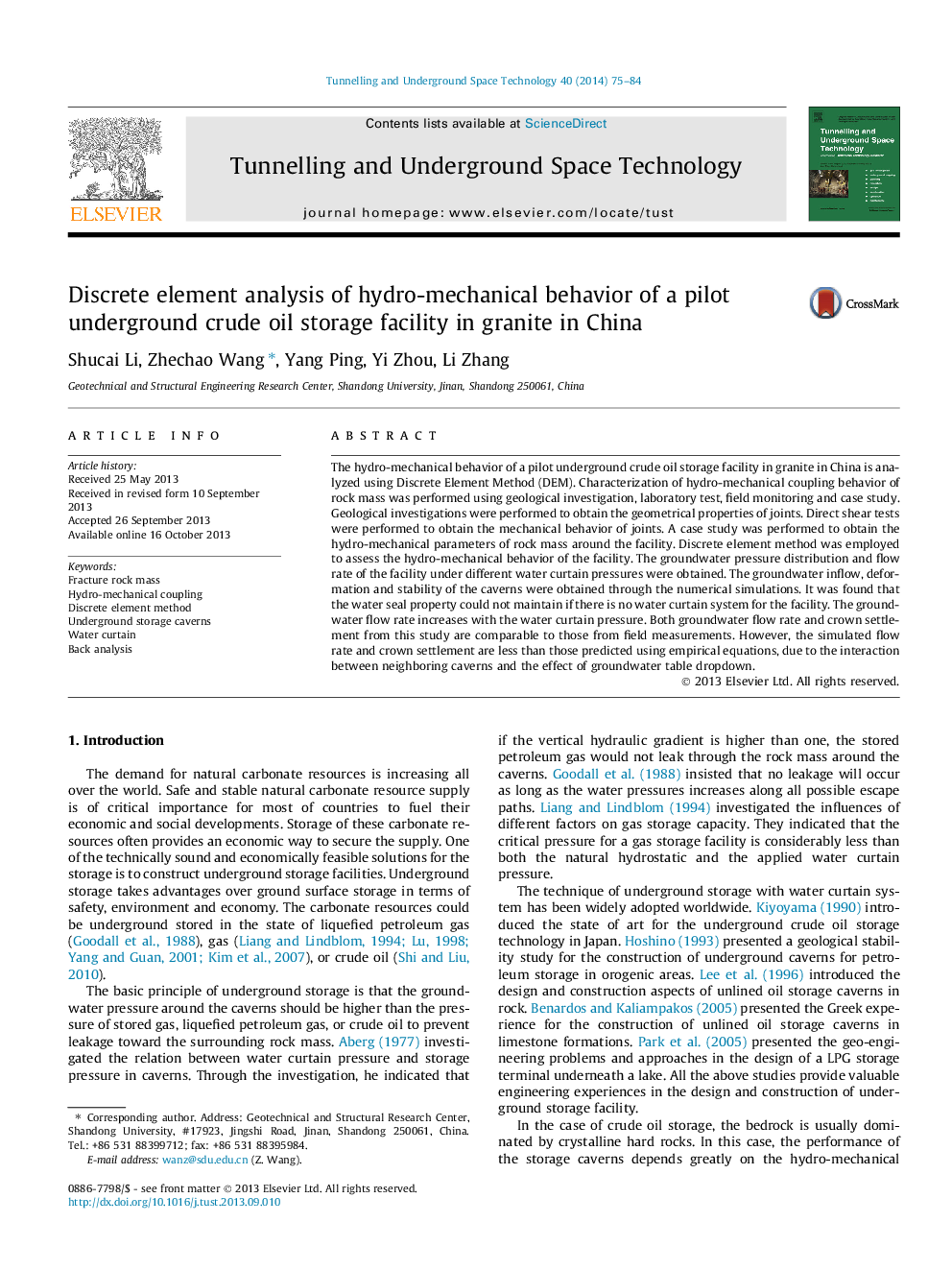| Article ID | Journal | Published Year | Pages | File Type |
|---|---|---|---|---|
| 313060 | Tunnelling and Underground Space Technology | 2014 | 10 Pages |
•Hydro-mechanical behavior of rock mass was analyzed using discrete element method.•Characterization of hydro-mechanical behavior was performed using various methods.•The importance of water curtain system for underground storage was addressed.•Water seal and stability properties of a pilot underground storage facility were obtained.
The hydro-mechanical behavior of a pilot underground crude oil storage facility in granite in China is analyzed using Discrete Element Method (DEM). Characterization of hydro-mechanical coupling behavior of rock mass was performed using geological investigation, laboratory test, field monitoring and case study. Geological investigations were performed to obtain the geometrical properties of joints. Direct shear tests were performed to obtain the mechanical behavior of joints. A case study was performed to obtain the hydro-mechanical parameters of rock mass around the facility. Discrete element method was employed to assess the hydro-mechanical behavior of the facility. The groundwater pressure distribution and flow rate of the facility under different water curtain pressures were obtained. The groundwater inflow, deformation and stability of the caverns were obtained through the numerical simulations. It was found that the water seal property could not maintain if there is no water curtain system for the facility. The groundwater flow rate increases with the water curtain pressure. Both groundwater flow rate and crown settlement from this study are comparable to those from field measurements. However, the simulated flow rate and crown settlement are less than those predicted using empirical equations, due to the interaction between neighboring caverns and the effect of groundwater table dropdown.
